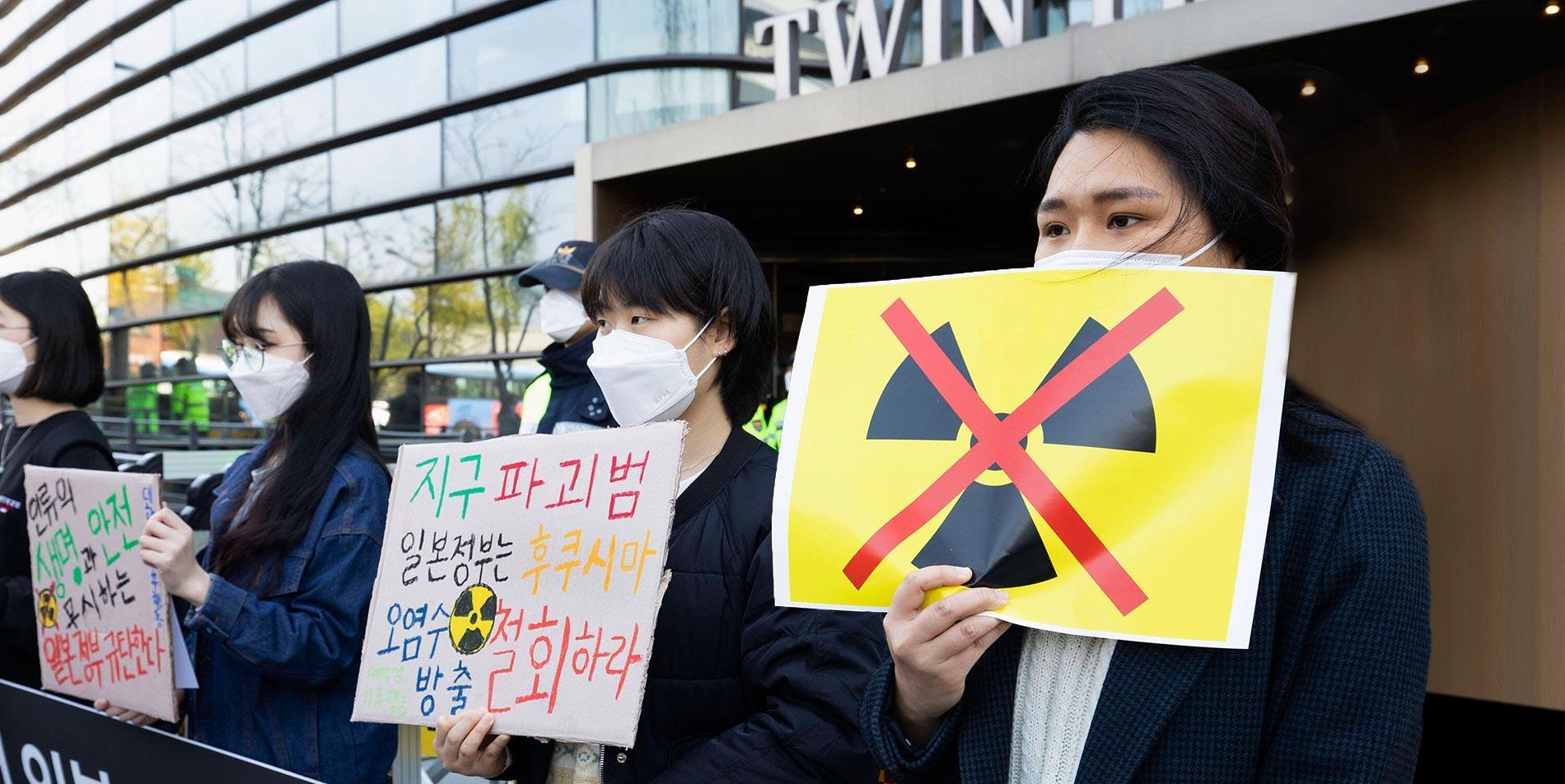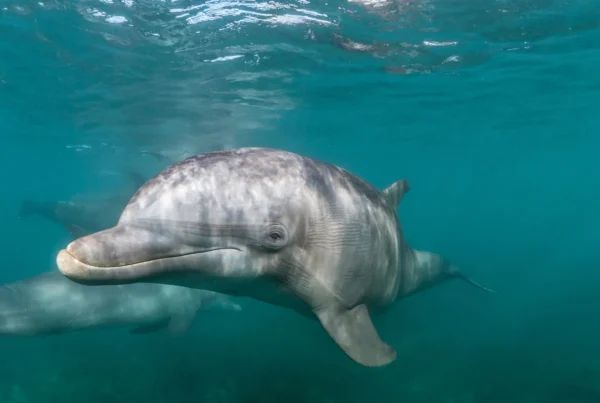Japan’s controversial decision to release contaminated nuclear wastewater from Fukushima into the Pacific Ocean is being opposed by ROK, China and other neighboring countries. The impact on marine life is potentially devastating – despite the Japanese government’s assurances to the contrary.
Yegor Shestunov, 9 May 2022
On 13 April 2021 the Japanese government announced the decision to release 1.4 million tons of contaminated wastewater from the Fukushima nuclear accident into the Pacific Ocean. The contaminated water has been treated at the Fukushima Daiichi site to remove most, but not all, of the radioactive contamination. While Japan is collaborating with experts and NGOs promising meticulous inspections, absolute safety, and transparency – neighboring states, local fisheries and environmental groups have strongly voiced their opposition, claiming such actions are extremely irresponsible.
The Fukushima nuclear disaster of 2011 was the result of a powerful earthquake followed by a tsunami that flooded the nuclear power plant facility. The accident disabled the power supply and cooling, thus causing three reactors to overheat, break down, and contaminate the cooling water. The Fukushima disaster was the most severe nuclear accident since Chernobyl in 1986. But, while the radioactive fallout cannot compare with the magnitude of the latter, it certainly caused significant political, social, and economic fallouts, particularly between Japan and its neighbours.
The 1.4 million liters of contaminated water are stored in 1000 large tanks on site. The tanks contain contaminated water that was used to cool reactor since the accident, as well as collected contaminated rainwater and water runoff from the site. Each day, to mitigate further potential contamination, around another 140 tonnes of water are collected in the tanks and, by summer 2022, all tanks meant to accommodate 1.4 million tonnes of radioactive water are expected to be full.
But this situation is set to change soon: Japan will release this water into the Pacific Ocean gradually over the next 30 years. Before releasing it, authorities promise to meet all regulatory and safety standards and purify the water to the best level possible for them. The water will be treated by the Advanced Liquid Processing System, a process which removes most radionuclides with the exception of tritium, which cannot be easily removed. Tritium is a form of hydrogen which emits low-level radiation and cannot be easily separated as it has identical properties to water. The treated water will then be brought via a specially constructed underwater sea tunnel to around a kilometer away from the coast and discharged over the next three decades.
Japanese authorities claim that the discharge of water cannot be postponed forever, and is absolutely necessary. They state they are running out of space to store contaminated water and complain that the water tanks make retrieval of leftover fuel debris on site impossible, take up much space and make further reconstruction of Fukushima power plant difficult.
The Environment Minister of Japan, Yoshiaki Harada, similarly concluded that gradual drainage of the contaminated water into the sea is Japan’s only feasible solution. Fumio Kishida, Prime Minister of Japan, said that the wastewater issue should not be delayed and assured the local population that the discharge of the contaminated water was completely safe. Taro Aso, Deputy Prime Minister, claimed that the treated water from Fukushima will meet all safe drinking-water standards. Chief Cabinet Secretary Hirokazu Matsuno said Japan will welcome the International Atomic Energy Agency’s (IAEA) review on the safety of releasing the water into the Pacific.
But while Japanese government officials and representatives from the IAEA reassured the public that gradual monitored release of the treated water is safe. The Japanese authorities claim that the impact of exposure to the wastewater is 1/100000 that of natural background radiation in Japan and that the gradual release of this water over the next 30 years should in no way harm marine life.
The IAEA Fukushima Task Force has released the first in a series of reports on its review and assessment activities. The report deals with Japan’s plans to discharge treated Fukushima wastewater, which must meet IAEA safety standards. These standards are the accepted worldwide reference for protecting the public and environment from harmful effects of ionizing radiation. The report covers a wide range of topics such as the characteristics of the Advanced Liquid Processing System treated water, safety-related aspects of the system built to discharge the water, the radiological environmental impact assessment, regulatory oversight, source and environmental monitoring programmes, occupational radiation protection, and the involvement of interested parties.
Some NGOs, such as Greenpeace, claim that the water discharged into the sea may in the long run damage the DNA of humans and other organisms. Shaun Bernie, a senior nuclear specialist from Greenpeace Japan, said that while the concentration of radioactive material would not be significant compared to previous accident releases, it would not be beneficial to marine life and human organisms. Major local fisheries in Japan have also stated that they remain firmly opposed, declaring that the government will be fully responsible for all the future negative impacts.
Japan has been accused of making a decision with international implications without having consulted with neighboring states. China has persistently criticized the decision to release the water into the sea and expressed deep regret when Japan officially announced it would do so. China promised a decisive response, which worsened the already strained relationship between the two countries. In a joint statement, the presidents of Russia and China, Vladimir Putin and Xi Jinping, said that the water should be handled on the basis of agreements between Japan and its neighbors. The Republic of Korea has also declared its strong opposition to the move and promised to ensure that South Koreans are safe from the contaminated water. South Korea will uphold its ban on seafood imports from the affected Japanese region.
“Many countries and international environmental groups have questioned if the water is truly harmless. Why doesn’t the Japanese side discharge it into lakes or use it for civil purposes instead of releasing it into the ocean? To say the least, why doesn’t it try to build more storage tanks for the water at home?” said China’s Foreign Ministry spokesperson Zhao Lijian.
The upcoming discharge has already resulted in a number of diplomatic confrontations. China, the Republic of Korea, Russia and some other countries, as well as NGOs and local fishermen, have expressed grave concern or dissatisfaction with Japan’s decision and lodged official protests. The Republic of Korea is even considering the possibility of filing a lawsuit against Japan at the International Tribunal for the Law of the Sea (ITLOS) and of requesting provisional measures through ITLOS. At the first meeting of the Ocean Affairs Dialogue Cooperation Mechanism between China and the Republic of Korea on April 14, Beijing and Seoul once again expressed their shared opposition to Japan’s nuclear wastewater release plan.
While the extent of damage to marine and human life has yet to be determined, the political fallout between Japan and its neighbors has already begun.
Picture: SEOUL, 14 April 2021 – People protest against Japan s decision to dump radioactive wastewater from the crippled Fukushima Daiichi nuclear power plant into the Pacific Ocean outside Japanese embassy in Seoul, South Korea. © IMAGO / Xinhua
Other Articles Which Might Interest You
10 Years Fukushima. Where Is Japan’s Climate Ambition Going In The Energy Sector?






